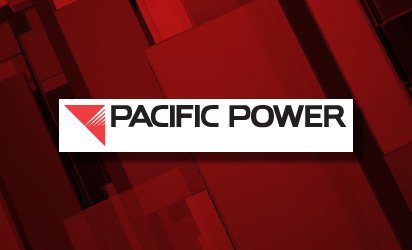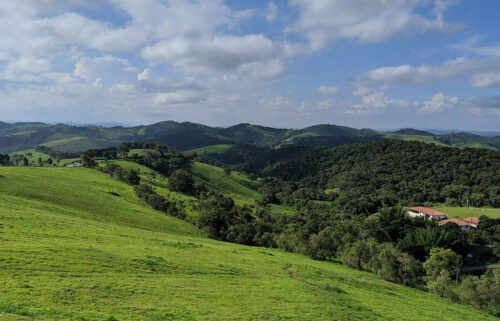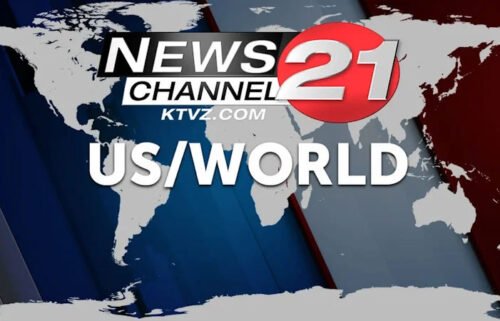Pacific Power submits to PUC inaugural plan to achieve net-zero emissions in Oregon by 2040

PORTLAND, Ore. (KTVZ) – Pacific Power released plans Wednesday to eliminate greenhouse gas emissions for all electricity sold to Oregon consumers by 2040, while significantly enhancing customer and community participation in decarbonization efforts.
The plan, filed with the Oregon Public Utility Commission, provides a roadmap for Pacific Power’s compliance with the clean energy measure (HB 2021) that Oregon Governor Kate Brown signed into law in 2021. Specifically, the law requires electricity providers to reduce emissions by:
- 80% below 2010-2012 baseline emissions levels by 2030;
- 90% below baseline emissions levels by 2035; and
- 100% below baseline emissions levels by 2040.
“This plan continues our progress on the path to decarbonization,” said Matt McVee, Pacific Power’s vice president for regulatory policy and operations, in a news release. “We are also working to enhance system resilience and reliability, while exploring and supporting community-based renewable energy projects.”
Pacific Power also filed its updated integrated resource plan Wednesday, advancing its trajectory toward net-zero emissions, calling for nearly four times the company’s current wind and solar resources. The plan also continues investments in innovative emissions-free technologies, including advanced nuclear and non-emitting peaking resources that meet high-demand energy needs.
Additionally, the company is at the forefront of driving innovation through grid development and market expansion which provides access to a diverse array of non-emitting resources throughout the West to ensure reliability and keep costs affordable for customers.
Pacific Power’s Clean Energy Plan outlines the company’s transition to renewable and non-carbon-emitting resources in Oregon, and it ensures those milestones are achieved equitably among its customers and communities. The plan meets Oregon’s near-term goals by limiting thermal resources that serve the state and seeking to increase Oregon’s share of non-emitting resources to serve the state’s growing energy needs.
The plan advances the following goals:
Engagement Opportunities. Pacific Power has developed a series of public engagement meetings in four main areas related to the Clean Energy Plan that include long-term resource planning, community benefits and impacts, Tribal Nations engagement and local distribution system planning. Interested parties can track meeting opportunities, participant input and company responses and other related material on dedicated Clean Energy Plan and Tribal Nations Engagement web pages.
Community Benefit Indicators (CBIs). The plan lays out a series of measurements to track the company’s performance in five main areas: system and community resilience; health and community well-being; environmental impacts; energy equity; and economic impacts.
Resilience. The plan includes two interim metrics for system resilience – one to measure efforts to reduce the frequency and duration of energy outages and another focused specifically on improving resilience for vulnerable communities.
Community-Based Renewable Energy (CBRE). As part of the plan, Pacific Power will pursue small-scale renewable energy projects that can be combined with microgrids, storage systems, demand response measures or other energy-related infrastructure that promotes climate resilience.
Path to net-zero. Pacific Power is on track to meet Oregon’s requirement to achieve emissions reductions 80% below baseline levels by 2030 through existing long-term resource plans. Over the next 20 years, Pacific Power plans to add more than 9,000 megawatts of new wind generation, about 8,000 megawatts of solar and 8,000 megawatts of energy storage, along with other non-emitting resources. The Clean Energy Plan identifies gaps between Oregon’s requirements after 2030 and the company’s existing resource plan’s trajectory to reach 100% emissions reductions. To address these gaps, the plan outlines two potential paths to meet the 2040 requirement by ensuring non-emitting resources are used to meet anticipated energy demand growth in Oregon after 2030, while acknowledging that advances in technology will be needed to meet the post-2030 requirements.
Oregon law also requires that small-scale renewable projects no larger than 20 megawatts make up 10% of the energy supply for Oregon customers by 2030. Pacific Power expects to issue separate Requests for Proposal for utility-scale and small-scale renewable projects to fulfill this requirement.
Pacific Power will be holding a public informational meeting on June 23 to further discuss the proposed plan with members of the commission and the public. For more information you can access the Clean Energy Plan on Pacific Power’s website.
About Pacific Power
Pacific Power provides safe and reliable electric service to 800,000 customers in Oregon, Washington and California. The company supplies customers with electricity from a diverse portfolio of generating plants including hydroelectric, thermal, wind, geothermal and solar resources. Pacific Power is part of PacifiCorp, one of the lowest-cost electricity producers in the United States, with 2 million customers in six western states. For more information, visit www.pacificpower.net.



